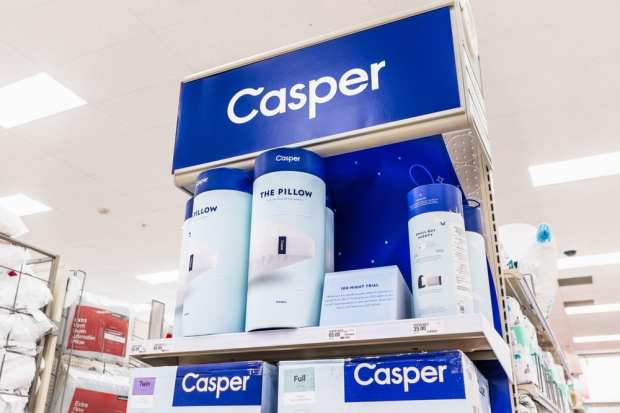Casper IPO Rebounds After Lower Valuation

When is a 12 percent gain in a stock – logged in a single day – cause for what might be the investor equivalent of a shoulder shrug?
When it comes with a very lowered bar as a backdrop.
Casper Sleep, the online mattress and “sleep economy” firm finished trading on its first day up a bit more than 12 percent, backing off earlier gains, finishing a volatile New York Stock Exchange debut in the wake of a Wednesday evening price range reduction.
As has been reported, the company came into Thursday’s session (Feb. 6) priced at $12 a share, opened at $14.50 and then closed the day at $13.50. The Wednesday action – and open – itself was better than the $12 to $13 range that had been targeted, markedly down from the $17 to $19 range depicted in SEC filings.
After the market closed, Philip Krim, co-founder and CEO of Casper, told The Associated Press he was happy with the debut but said he continues “to be very focused on a long-term vision.”
In other published reports, Krim brushed aside the lower valuations, calling them “moments in time.”
The recent closing price gives the company a market cap of less than $500 million, where once Casper had a $1.1 billion valuation implied by its latest fundraising round. The gap between what private investors may have been willing to pay, and what the public is willing to pay, at least out of the gate, is telling. As we noted in this space, upon parsing the SEC filings, growth has been slowing. Markedly so.
Consider the fact that its filing shows that for the year that ended in December 2018, sales of $357.9 million were up 42 percent as measured against 2017. And though it is only partial data, through the first nine months of 2019, for Casper Sleep the top line now is at a relative sleepwalk, up 21 percent to $312 million.
In the meantime, a net loss of $67 million was up 4.7 percent in that same (stub) period. Looking ahead, the firm states that full-year revenues should be about $437 million to $441 million, which would be a midpoint of 23 percent. Not bad, but perhaps not the growth demanded by the investors who get excited about eCommerce. Thus, we’ll surmise the pricing into Thursday’s bow on the NYSE had to find a floor, to help compensate for losses that continue to accrue.
Casper had said in the filing that the proceeds generated from the 8.3 million shares on offer (sans over-allotments) would be used to fund growth, which would seemingly include more retail operations added to its existing pantheon of 60 locations. There are also businesses ancillary to mattresses and furnishing that are under development. Funding those plans, at least (partly) through the first go-round of a public offering, may have generated enthusiasm not long ago. Thursday shows that Wall Street dreams sometimes don’t come true.
